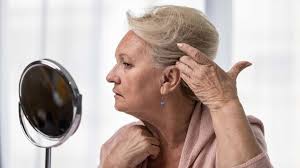Skin aging is not just a cosmetic concern—it reflects deeper changes that impact barrier function, immune defense, and overall skin health. Aging manifests as wrinkles, thinning, and pigment irregularities, caused by intrinsic (chronological) and extrinsic (environmental) factors. As life expectancy rises, understanding skin aging at molecular and clinical levels is crucial. This knowledge paves the way for innovative, evidence-based therapies aimed at not just appearance but also functional skin restoration.
Methods
This review presents an integrative overview of skin aging by exploring clinical patterns, molecular markers, and ethnic differences in aging manifestations. It critically examines therapeutic modalities—from topical treatments and light-based therapies to microneedling and injectables. Priority is given to strategies with demonstrable scientific efficacy, offering a comprehensive resource for preventive and restorative dermatology.
Key Findings
- Multifactorial Causes of Skin Aging: Aging arises from both intrinsic factors (e.g., telomere shortening, oxidative stress, hormonal decline) and extrinsic factors (e.g., UV radiation, pollution, smoking, poor diet). Together, they lead to structural and functional deterioration of the skin.
- Clinical Manifestations:
- Extrinsic aging results in coarse wrinkles, pigmentation (e.g., lentigines), and telangiectasia.
- Intrinsic aging leads to epidermal thinning, reduced elasticity, and fine lines.
- Both forms impair wound healing and increase susceptibility to infection and cancer.
- Histopathological Changes:
- Collagen and elastic fiber degradation
- Flattening of the dermoepidermal junction
- Reduced microvascular and immune function—all contributing to sagging, loss of firmness, and dull appearance.
- Molecular Drivers:
- Telomere shortening → cellular senescence
- Oxidative stress → activates MMPs → ECM breakdown
- Chronic inflammation from dysregulated cytokines
- Impaired autophagy and apoptosis
- Altered skin microbiome and regulatory microRNAs also play significant roles.
- Phototype-Specific Aging:
- Darker skin types (Fitzpatrick V–VI) show delayed wrinkling but increased pigmentation issues.
- Asian skin tends to show pigmentary aging (melasma, lentigines).
- Lighter skin types (I–III) show earlier wrinkling and volume loss.
- Therapeutic Approaches:
- Topicals: Retinoids (collagen renewal), glycolic acid (exfoliation), antioxidants (free radical defense), niacinamide (barrier repair), azelaic acid (depigmentation).
- Light-Based Therapies: IPL, CO₂ lasers, Nd:YAG, and PDT—all help with collagen stimulation and pigment issues.
- Mechanical Therapies: Microneedling, microdermabrasion, and chemical peels induce dermal remodeling and renewal.
- Injectables & Minimally Invasive: Botulinum toxin (wrinkle softening), HA fillers (volume restoration), mesotherapy (hydration and repair).
Skin aging research is shifting toward regenerative, precision-based dermatology rooted in molecular science. This review emphasizes the need for personalized regimens that consider genetic background, lifestyle, and phototype. The future lies in merging “omics” technologies with clinical care to tailor treatments to individual aging trajectories. The goal is not just cosmetic correction, but sustained skin resilience, health, and biological youth across a longer life span.
Link to the study: https://www.mdpi.com/2079-9284/12/4/144

